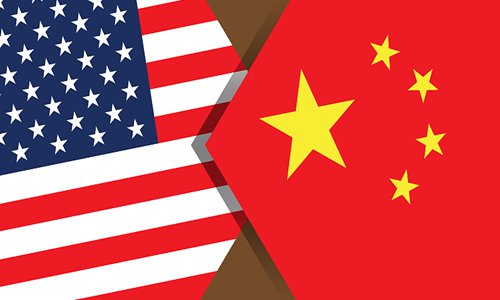HOME >> OPINION
Viewing trade talks progress with rationality, calmness
Source:Global Times Published: 2019/10/12 11:31:25

Photo: VCG
The new round of high-level economic and trade consultations between China and the US concluded Friday in Washington. US President Donald Trump met with Chinese Vice Premier Liu He. Information released by both sides suggests that substantial progress has been achieved. The two sides agreed to continue meeting each other halfway and working together toward a final agreement.
Public opinion was not optimistic about the negotiation results before this new round of trade talks. In particular, the US exerted new pressure on China ahead of the consultations, which triggered a wave of pessimistic analysis from the international community. But the outcome is clearly better than what was expected.
The trade war has lasted for more than a year. Both sides have suffered losses, and no sign of victory by any side can be observed.
Although a majority of people in both the US and China are in favor of ending the trade war, it is not easy for the two countries to truly address key differences and meet each other halfway. Efforts are still needed to find a way out of the previous stalemate and let rational emotion dominate both sides' opinion field.
During this round of consultations, the two sides conducted frank, efficient, and constructive discussions and made substantial progress in areas including agriculture, intellectual property rights protection, exchange rate, financial services, trade cooperation, technology transfer, and dispute settlement. Follow-up consultation arrangements were also discussed.
However, every time the two sides achieved something in trade talks, there would be criticisms in both countries, saying their own country "suffering losses" or even "caving in."
Among these criticisms, some are naïve, and some are intentional due to politics or other reasons. It is hoped that neither side will be disturbed by these criticisms. The two negotiation teams should speed-up consultations and pave the way for a final agreement.
Ending the trade war means removing all imposed tariffs, which is a pre-requisite . The longer the trade war, the more the tariffs. However, the original intention of trade talks - returning to the tariff level before the trade war - cannot be forgotten.
Eliminating a part of tariffs only signifies mitigated tensions, rather than an end of the trade war. To end the trade war, both sides need to move forward in accordance with the consensus reached between the two state leaders.
The two sides agreed that China will purchase more agricultural products from the US. But if China purchases them on and off, a stable environment cannot be created in which US agriculture can make use of the Chinese market to accelerate its progress toward prosperity. Only if the two sides sign a comprehensive economic and trade agreement, business partners of the two countries, including US farmers, can make long-term development plans and stay away from turmoil.
A great deal of work needs to be done for the two sides to reach a final deal. It is important for the two countries not to be disturbed by temptations. Past experience has shown that there would always be such interferences, and both China and the US need to be determined.
Uncertainty still exists. China should be calm about the current progress. Regardless of whether the current progress is a "turning point," as long as we do our own things well, China will by no means helplessly drift with the tide facing an uncertain future.
Posted in: EDITORIAL